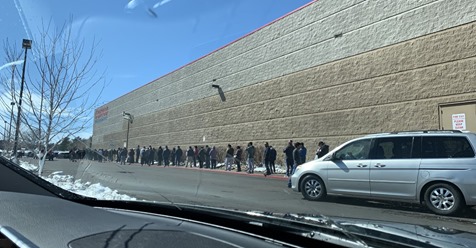By Kat Martin
Source: www.winsightgrocerybusiness.com, April 2020
With social distancing, retailers are implementing virtual velvet ropes
As the number of deaths begins to mount and grocery workers are proven not immune to the coronavirus, grocery retailers are beginning to strictly enforce social distancing by limiting the number of people in stores. The ways grocery stores have implemented this vary broadly from lines that wrap around the store to virtual reservations.
OpenTable, the restaurant reservations app, has shifted gears to partner with supermarkets, where shoppers can reserve a specific time to go shopping (just like they could use the app to make a reservation at a restaurant) or join the store’s online wait list to wait safely in their cars until they are notified they can enter the store. The service was introduced in California but has since rolled out across the major metro areas in the country.
Other retailers are directing customers to their websites to get a better idea of when they can safely shop their stores. Schnuck Markets, based in the St. Louis area, updates its website every minute on the number of shoppers in select stores and lists how many open slots are still available for customers to enter to begin shopping. If no slots are currently available, the website also lists how many customers are currently waiting for entry. Schnucks’ Store Customer Traffic queuing system, which affects about 70 locations, requires a store employee to track the number of customers in the store, and if the number allocated for that store has been reached, the employee asks for the customers name and/or phone number and the customer will be assigned a number. If the customer provides a mobile number, they may return to their car and await a SMS message to notify them of their place in line and when they can enter the store. If a customer chooses not to give a cell number, they will wait in line outside the store until their name is called.
Buehler’s, based in Wooster, Ohio, also is using its website to help customers find a “Best Time to Shop.” The retailer is analyzing its customer traffic from the previous week and creating grids that show the slowest and busiest times in each of its stores to help customers plan shopping trips when the store is less busy to help implement social distancing. The grids are broken down into two- and three-hour time slots and color coded with green for slowest shopping times, yellow for average times and red for busy times.
As previously reported, some retailers, such as ShopRite, are turning to virtual queues to pace traffic to their e-commerce sites.

